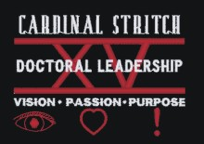Humor has saved my life. Really. It likely has saved my job a few times, too. I'm not talking about having to be a stand up comedian like Roz Turner, but how about a few little lines to break up otherwise very serious and crucial conversations. How about adding some positive emotions through the use of humor in tough situations. It is one of the only ways I have been able to survive taking care of my father. That lesson can be directly applied to every work situation I have encountered as well. When humor exists, everyone is happier. That seems simply to say, but it is true.
It has been terribly devastating over the last 9 years to watch my fathers long and slow decline with Huntingon's disease. Many times there isn't much to laugh about. Like the time when he went into our basement and was laying on the floor and he really believed he was in a coffin. He kept screaming, "Get out, get out" thinking that if we were there it would mean death for us to. Not funny.
I can honestly say, however, that humor is the one thing that has consistently gotten us through all these tough times. Like the time he entered a place where he had a tick that he ended "*%ck you" to everything he said. I would go into his room to put him to bed and tell him I loved him. He would respond in a quite loud tone, "I love you, *%ck you." While some may take that as quite a negative expression, for my dad ti was quite funny. In fact, if you think hard about all of the relationships you have entered either with a spouse, best friend, children, etc. "I love you, *%ck you" probably very well describes how you feel at times in every one of those relationships. I do think there is a story somewhere in that one.
I think that Ron Berk (2010) best describes it, "It's all about time and how we spend it. How do we best use our time so that it is something that we look forward to." Humor does that and it is an essential ingredient in the care plan for my father.
Over the years I have also found that humor is an essential component of work as well. Whether giving professional development workshops for teachers, or working in a principal position, humor goes a long way in creating at atmosphere that works. I think it is about the how the molecules must loosen up in a situation where people are laughing. I'm sure you have felt it. It is such a wonderful feeling to laugh. It changes our demeanor and makes each day something we can look forward to.
One of the tips given by our local panelist Jim Lindenberg (2010) is to "make sure you have fun! Enjoy what you do and have a passion for it." This is so essential to happiness in the workplace and I do think the old adage that laughter is contagious is true. A leader's passion demonstrated to others will bring about a workplace surrounded in fun.
As Roz Turner (2010) said, "Humor is hazardous to your illness." All those toxic cultures can be broken down with humor. Laughter in a caring and compassionate way. A story to tell that others can connect and laugh with.
Much of the work of leaders is very serious just like the work involved in taking care of my father, but leaders must never forget that humor is one essential key!
Berk, R.A. (2010, June). Humor in the workplace: how to create a “fun” work environment. Lecture delivered at Summer Institute at Cardinal Stritch University, Milwaukee, WI.
Buerosse, M., Lindernberg, J., & Gayhart, R. (2010, June). Local panel of business experts. Lecture delivered at Summer Institute at Cardinal Stritch Unviersity, Milwaukee, WI.
Turner, R. (2010, June). Practical exercises for using humor in the workplace. Lecture delivered at Summer Institute at Cardinal Stritch University, Milwaukee, WI.






